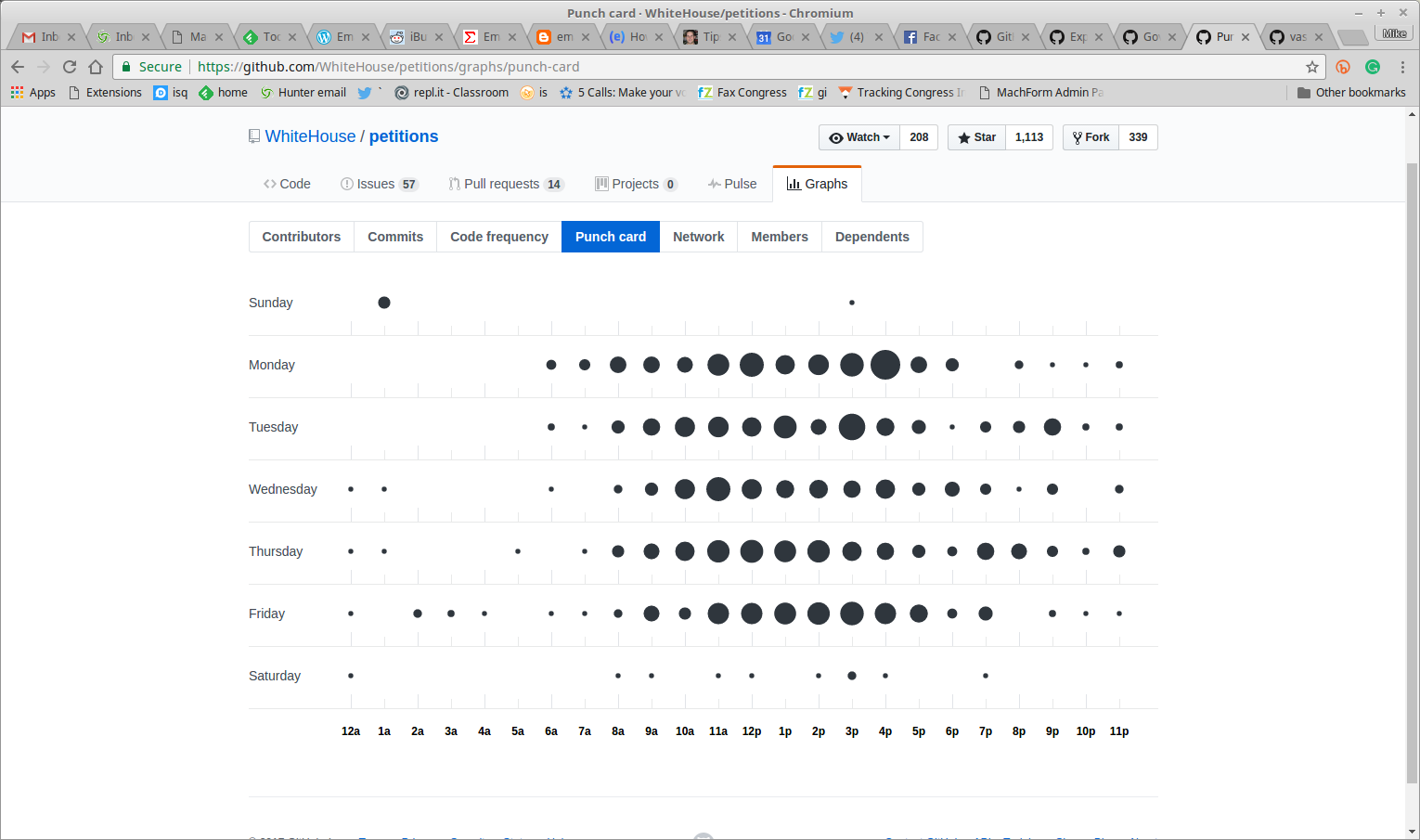GitHub as a tool for education
When I started using git and GitHub with my students it was a natural progression having started with started with CVS and then, as technology changed moving through Subversion and then Mercurial. It was all about using sensible professional software development techniques while making it easier for students to submit work and for me to evaluate their submissions.
Over time, I found that git and GitHub in fact provided some extra support for educators right out of the box.
In my last github post I talked about using the results of git log
and looking at diffs. Both provide ways of seeing what a student did
and when. The commit log and history make it easier to hold students accountable to working
through a project and not leavings for the last minute. The diffs make
it easier to see what's changed both to see progress and also to help
support students as they develop their projects.
If you use Emacs, as I do, you can use the git timemachine package which does a great job visualizing changes:

Other editors might have a similar feature.
The contribution graphs also provide a quick snapshot which shows what team members are contributing and when:

The punchcard graph is also useful to see when students actually do their work.

GitHub also make it easy to set up starter code or to have students "take over" each others projects by forking.
I'm very happy using git and GitHub as is but if you want more support, check out GitHub Classroom. Had it existed when I started, I'd probably have used it but since I had already gotten used to my work flows I've stuck with raw git and github.
In case you missed the earlier posts describing the process I use to introduce github to my classes here they are:
I'm hoping some of you have found this set of four posts useful or at least interesting.

Comments
Comments powered by Disqus